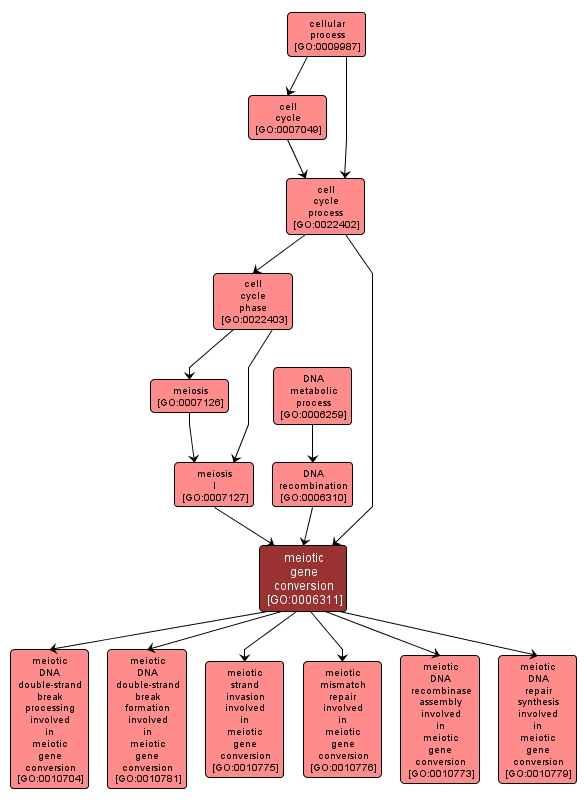| Desc: |
The cell cycle process whereby genetic information is transferred from one helix to another. It often occurs in association with general genetic recombination events, and is believed to be a straightforward consequence of the mechanisms of general recombination and DNA repair. For example, meiosis might yield three copies of the maternal version of an allele and only one copy of the paternal allele, indicating that one of the two copies of the paternal allele has been changed to a copy of the maternal allele. |














